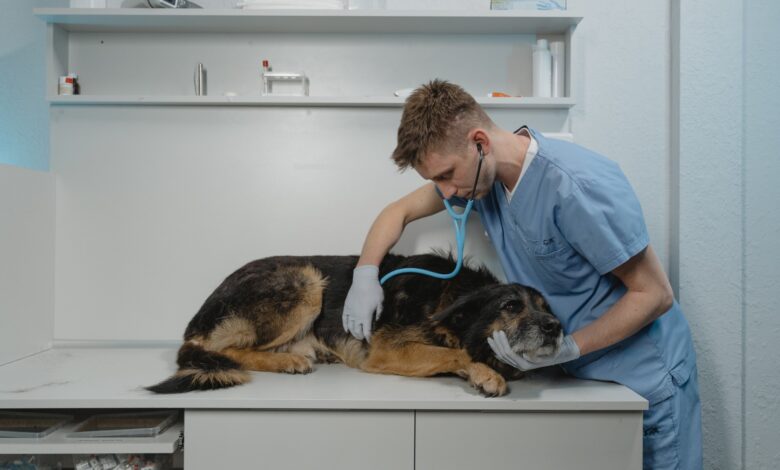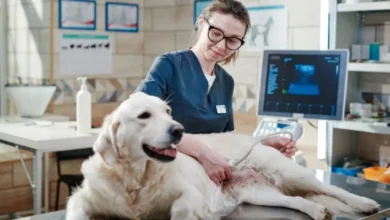Getting Pet Sitting Insurance: Steps to Protect Your Work

Understanding Pet Sitting Insurance
Pet sitting insurance is a specialized type of liability insurance designed for professionals who care for pets while their owners are away. This coverage protects pet sitters from potential legal claims and financial repercussions arising from accidents or damages that may occur during the course of their work.
As a pet sitter, you are entrusted with the well-being of someone else’s beloved animal, which comes with significant responsibilities. While many pet owners are understanding and trusting, unforeseen events can happen, making it crucial to have the right type of insurance coverage in place.
Why You Need Pet Sitting Insurance
The need for pet sitting insurance extends beyond mere compliance; it offers peace of mind for both you and your clients. Here are several reasons why obtaining this insurance is essential:
– Liability Protection: Accidents can happen, even in the best circumstances. If a pet injures another animal or person while under your care, you could be held liable for medical expenses and damages.
– Property Damage: Pets can sometimes cause unexpected damage to property, whether it’s chewing furniture or knocking over valuable items.
– Legal Fees: If a claim is brought against you, even if it’s unfounded, legal fees can quickly accumulate, potentially jeopardizing your finances.
– Professional Credibility: Having insurance boosts your credibility as a professional pet sitter, enhancing trust among potential clients.
Types of Coverage Available
When seeking pet sitting insurance, it’s important to understand the different types of coverage available to ensure comprehensive protection:
General Liability Insurance
This is the most common form of insurance for pet sitters, covering bodily injury and property damage claims that may arise during your work.
Professional Liability Insurance
Also known as errors and omissions insurance, this coverage protects against claims related to negligence or failure to perform professional duties.
Animal Bailee Coverage
This specialized coverage protects you if an animal in your care becomes lost or injured. It can cover veterinary bills or other expenses related to the animal’s care.
Business Property Insurance
If you operate a home-based pet sitting business, this insurance covers physical assets like equipment and supplies against theft or damage.
Assessing Your Risks as a Pet Sitter
Before obtaining pet sitting insurance, it’s vital to assess the specific risks associated with your business model. Consider these factors:
– Types of Animals: Different breeds have varying temperaments and risks associated with them. For example, larger dogs may pose more significant liability risks than smaller breeds.
– Activities Involved: Are you offering additional services like grooming or walking? Each activity carries its own risk profile that should be evaluated.
– Client Locations: The environments where you work can influence risk levels. For example, urban settings might present more hazards compared to suburban areas.
Creating a risk assessment matrix can help identify potential liabilities and guide your insurance choices effectively.
Steps to Obtain Pet Sitting Insurance
Acquiring pet sitting insurance involves several key steps:
1. Research Providers: Look for insurers that specialize in pet-related businesses or general liability providers offering coverage tailored to pet sitters.
2. Get Quotes: Request quotes from multiple providers to compare pricing and coverage options.
3. Evaluate Policies: Read through policy documents carefully to understand coverage limits, exclusions, and terms before making a decision.
4. Consult an Advisor: If you’re unsure about certain aspects of the policies, consider consulting an insurance advisor who specializes in small businesses.
5. Finalize Your Coverage: Once you’ve selected a provider, complete the necessary paperwork and secure your policy.
Choosing the Right Insurance Provider
Selecting the right insurance provider is critical to ensure that you receive adequate protection tailored to your needs as a pet sitter. Here are some tips:
– Check Reviews: Look for customer reviews and testimonials about their experiences with potential insurers.
– Assess Financial Stability: Research the financial stability of the insurer through ratings from agencies like A.M. Best or Standard & Poor’s.
– Customer Service: Ensure that the provider has responsive customer service in case you need assistance with claims or policy questions.
– Specialization: Choose companies that specifically offer services for pet businesses, as they will better understand the unique risks involved.
Cost of Pet Sitting Insurance
The cost of pet sitting insurance can vary widely based on several factors:
– Location: Urban areas may have higher premiums due to increased risk exposure.
– Coverage Amounts: Higher coverage limits will naturally increase your premiums.
– Experience Level: Newer pet sitters may pay higher rates compared to those with years of experience and a solid reputation.
– Business Size: Larger businesses with multiple employees might incur higher costs due to increased liability exposure.
On average, expect to pay anywhere from $300 to $1,000 annually for comprehensive coverage.
Common Exclusions and Limitations
Understanding what is not covered by your policy is equally important as knowing what is included. Common exclusions may include:
– Pre-existing Conditions: Any health issues existing prior to your engagement with a client’s pet are typically not covered.
– Intentional Acts: Damage caused by deliberate actions taken by you or someone under your supervision usually falls outside coverage.
– Certain Breeds/Species: Some policies may exclude specific breeds deemed high-risk due to behavior patterns.
Always read the fine print before signing any agreement to avoid surprises later on.
Maintaining Your Coverage
Once you’ve obtained pet sitting insurance, it’s essential to maintain it properly:
– Review Annually: Conduct annual reviews of your policy to ensure it continues meeting your needs as your business grows or changes.
– Update Information Promptly: Notify your insurer immediately if there are any changes in your business operations or client base that could affect coverage.
– Stay Informed About Changes in Law: Be aware of local regulations concerning pet ownership and business operations which may impact your liability requirements.
Building Trust with Clients through Insurance
Having proper insurance not only protects you but also enhances trust among clients. Here’s how:
– Transparency: Be upfront about your insurance status when discussing services with potential clients; this demonstrates professionalism.
– Certifications and Proofs: Provide documentation of your insurance during consultations—it reassures clients that you’re taking responsible measures for their pets’ safety.
– Testimonials and Referrals: Encourage satisfied clients to share their experiences regarding how having insurance contributed positively during unexpected incidents.
By positioning yourself as a responsible and insured professional, you cultivate stronger relationships with clients while ensuring peace of mind in providing exceptional care for their furry friends.
In an industry where trust is paramount, having adequate insurance transforms not just how you operate but also how clients perceive your services—making it an indispensable part of being a successful pet sitter.




